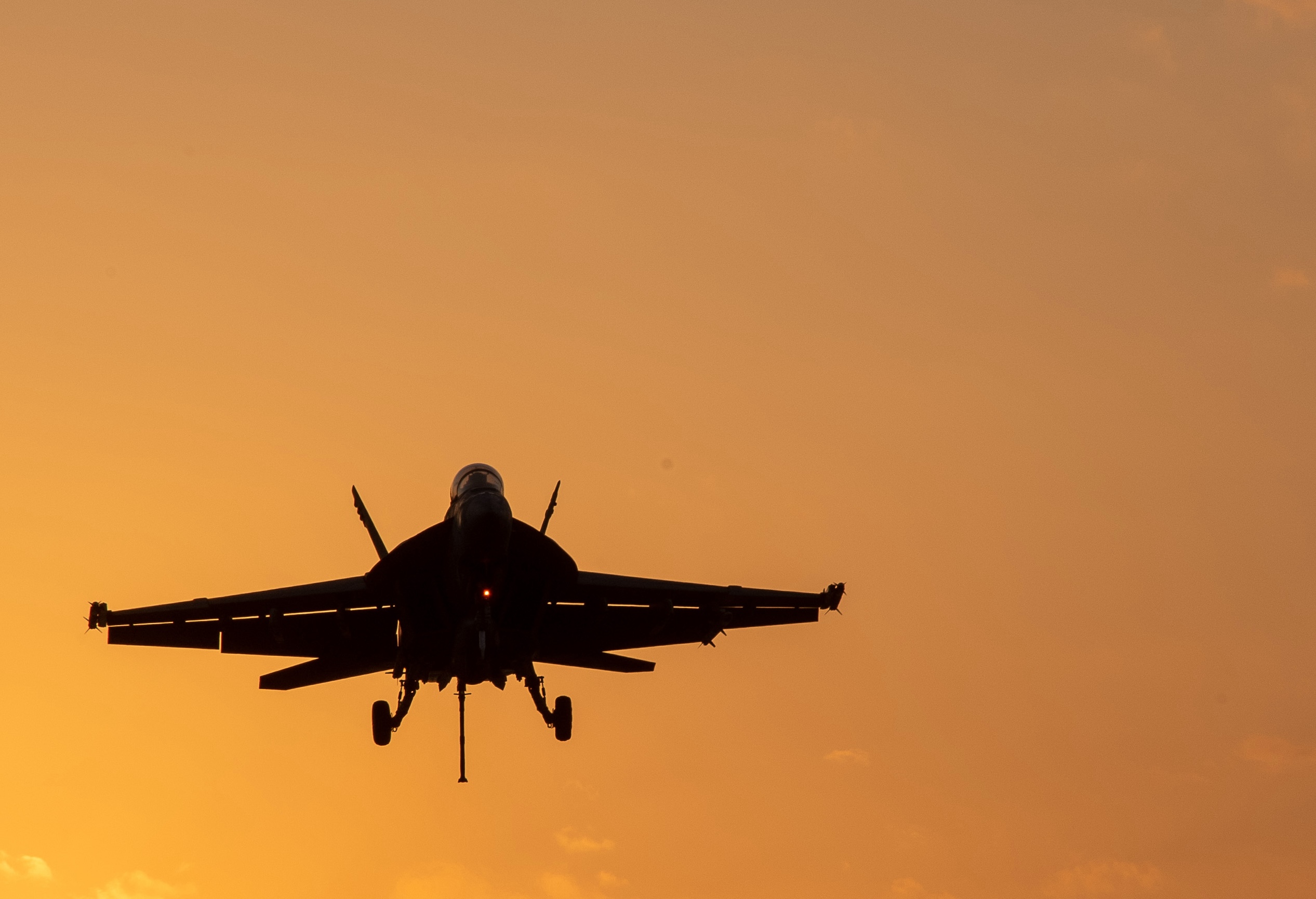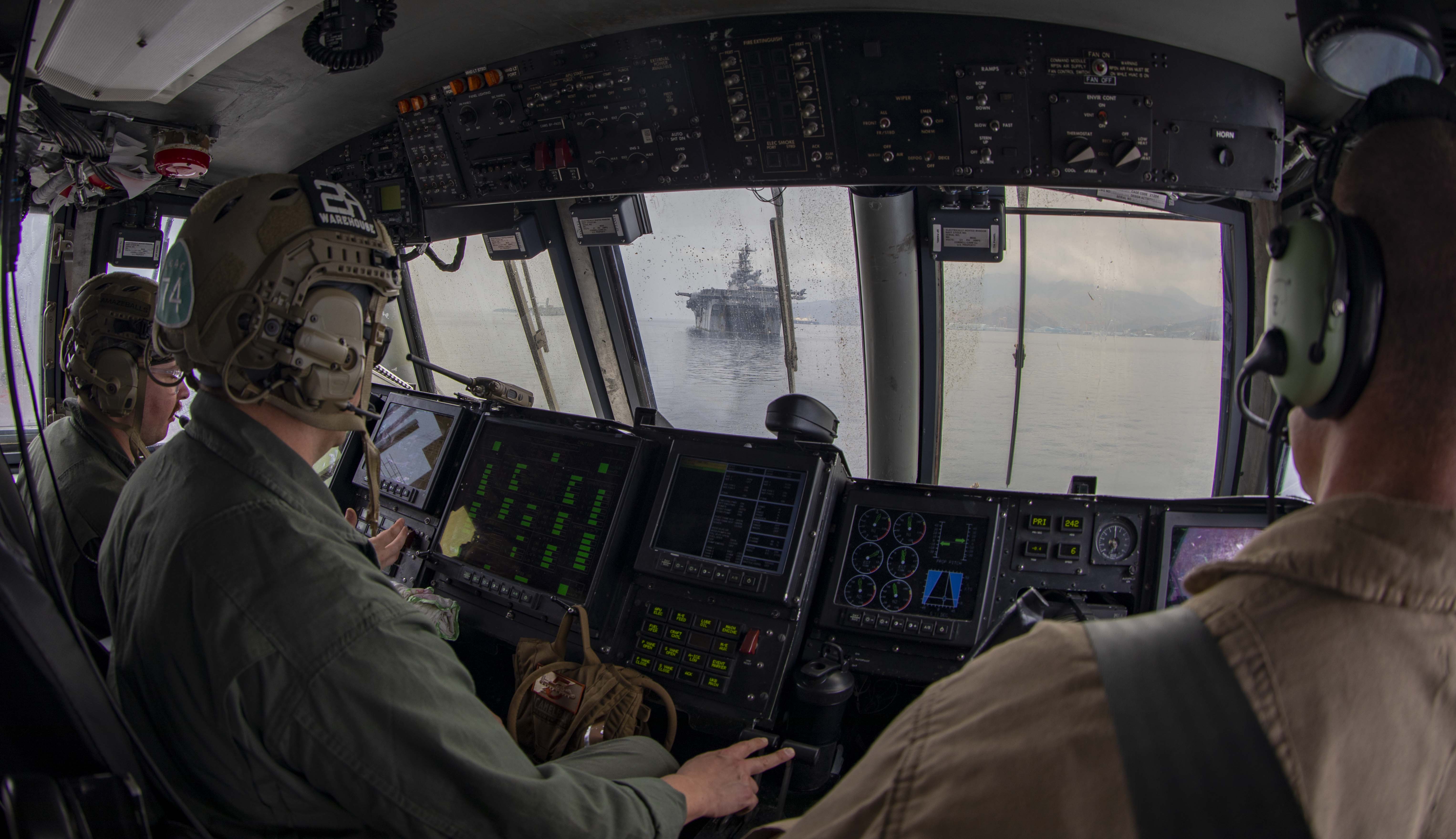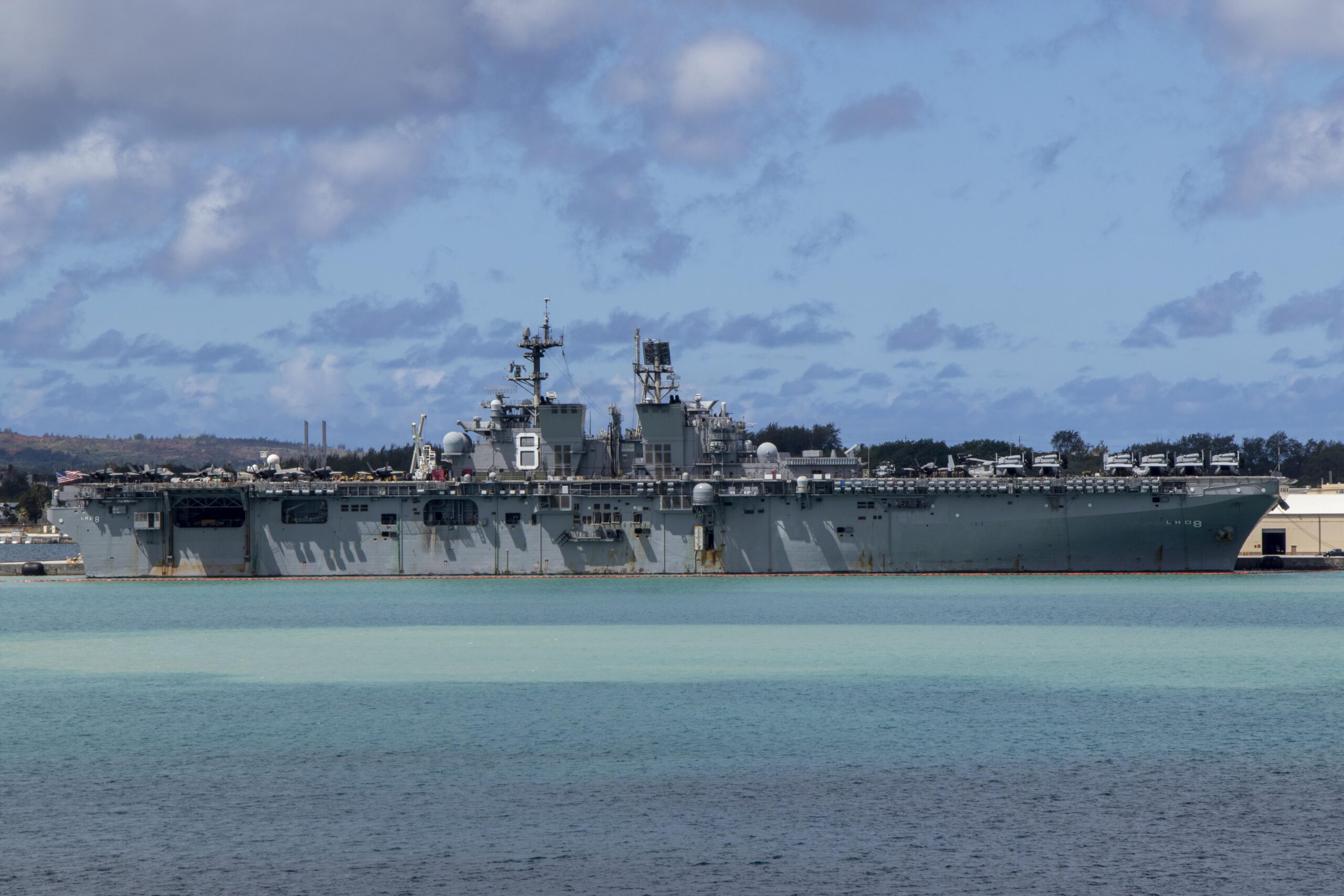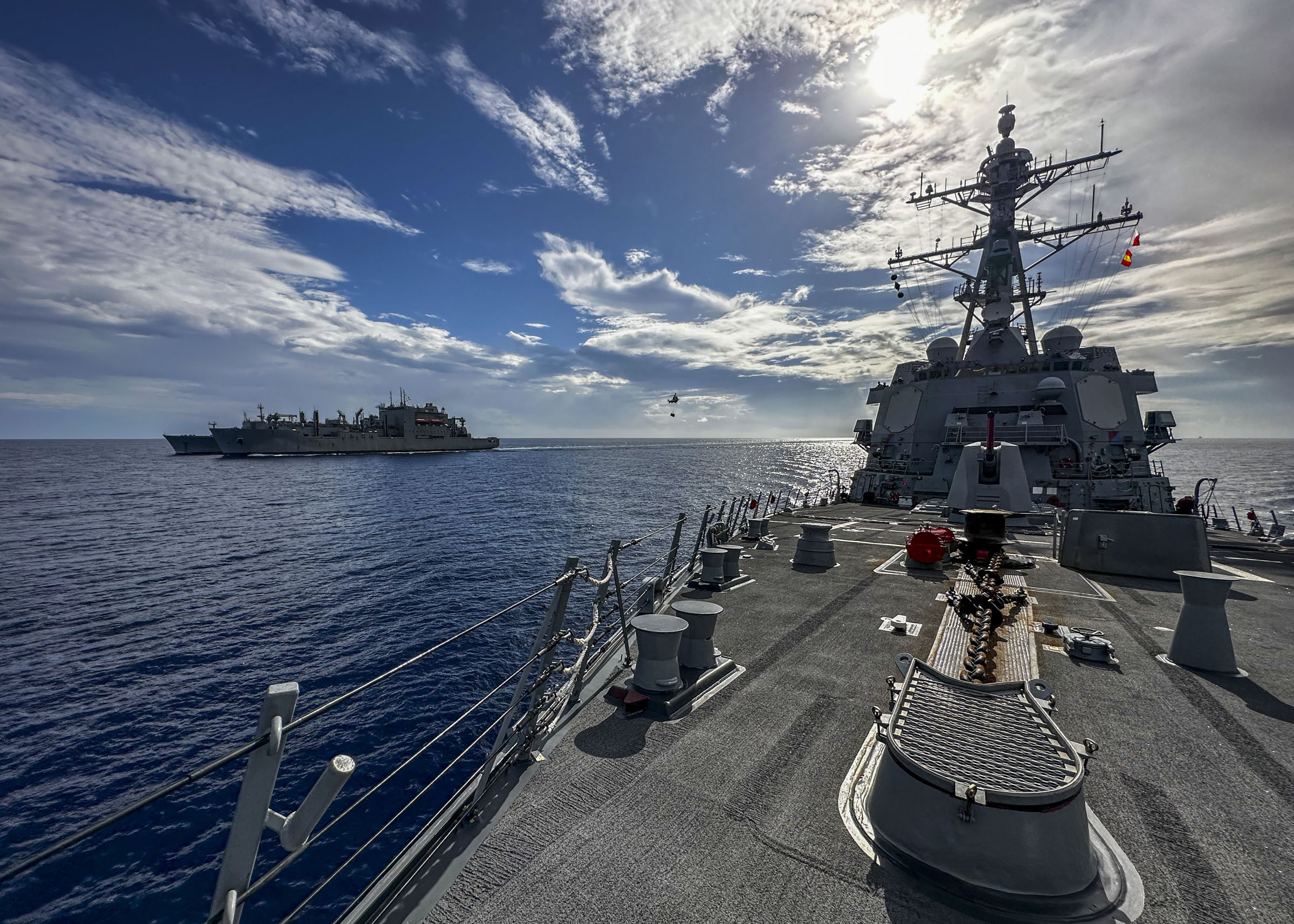This post is part of a series looking back at the top naval stories from 2023.
U.S. naval operations this year saw the sea service again balancing its priorities in the Indo-Pacific with presence needs in other theaters.
The U.S. Navy kept a steady warship presence in U.S. 6th Fleet as Russia’s invasion of Ukraine entered its second year.
Meanwhile, the last quarter of 2023 saw a naval buildup in the Middle East following Hamas’ deadly attacks in southern Israel. In the months since the Oct. 7 attack, U.S. destroyers in the region have had to engage numerous drones and missiles launched from Houthi-controlled parts of Yemen.
Even with the pressing needs in other theaters, the U.S. Navy continues to prioritize the Indo-Pacific, where warships regularly deployed and performed exercises with allies and partners across the region.
Carrier Deployments

Aircraft carrier USS Nimitz (CVN-68) spent the first half of 2023 deployed to the Indo-Pacific.
During its time in the region, the carrier participated in the second iteration of U.S. Indo-Pacific Command’s Large Scale Global Exercise, which also featured several other nations, including Japan. The LSGE drills continued from mid-May through Mid-August.
Nimitz operated throughout the Western Pacific, including in the South China Sea, the Philippine Sea and the East China Sea. Toward the end of its deployment, the carrier also operated as a communications hub to help relief efforts in Guam after Super Typhoon Mawar.
Nimitz also exercised with the Makin Island Amphibious Ready Group during the deployment. Nimitz’s F/A-18 E/F Super Hornets and E-2D Advanced Hawkeyes worked with USS Makin Island’s (LHD-8) F-35Bs.
Meanwhile, USS Ronald Reagan (CVN-76), the Navy’s only forward-deployed aircraft carrier that is based in Yokosuka, Japan, got underway in May for its annual spring patrol. Reagan operated in the South China Sea and made port calls to Da Nang, Vietnam and Bali, Indonesia.

In October, the Reagan Carrier Strike Group drilled with Japan Maritime Self-Defense Force frigate JS Noshiro (FFM-3) in the East China Sea.
That same month, USS Carl Vinson (CVN-70) left for its Indo-Pacific deployment. The carrier made a port call in Busan, South Korea around Thanksgiving and then performed a trilateral exercise with South Korea and Japan in the East China Sea. The deterrent drills came just after North Korea launched a reconnaissance satellite.
As of the Dec. 18 USNI News Fleet & Marine Tracker, Vinson was visiting Singapore. The carrier is one of the Navy’s few flattop that is outfitted with F-35Cs and the Marine Corps MV-22B Ospreys. But to Naval Air Systems Command’s ongoing grounding of the Osprey fleet, Vinson is relying on the older C-2A Greyhounds flying out of Marine Corps Air Station Iwakuni, Japan, for the carrier onboard delivery mission.
Amphibious Ship Deployments

The Makin Island Amphibious Ready Group spent the first several months of 2023 in the Western Pacific for a high optempo deployment featuring exercises with allies and partners throughout the region. It was the first ARG/MEU from the continental United States that remained in the Indo-Pacific for the duration of its deployment, Col. Samuel Meyer, the commanding officer of the 13th MEU, told USNI News in an interview this year.
The other two ships in the ARG – amphibious transport docks USS John P. Murtha (LPD-26) and USS Anchorage (LPD-23) – peeled off at time to participate in other exercises. Anchorage went to Sri Lanka for the Cooperation Afloat Readiness and Training exercise.
“On this deployment alone, we demonstrated everything from the high-end integrated air and missile defense fight with F-35s and MV-22s, all the way to practicing for humanitarian aid and disaster relief, or search and rescue, or medical operations,” USS Makin Island (LHD-8) commanding officer Capt. Andria Slough told USNI News during the same interview.
Makin Island also participated in the largest-ever Balikatan exercise, which is hosted annually by the Philippines. F-35Bs from the big-deck amphibious ship dropped the GPS-guided GBU-32 bombs that sank the Philippine Navy’s decommissioned corvette BRP Pangasinan for Balikatan’s SINKEX.

During its deployment, Makin Island also operated with carrier Nimitz, bringing fifth-generation fighter capability to the carrier strike group.
“We made a strike force with fully integrated chains of command, fully integrated tasking. And it wasn’t the carrier does everything. Makin Island served as the integrated air and missile defense commander for a few days of that. The tasking was combined for the air forces and even the ground forces,” Slough said at the time.
Meanwhile, the America Amphibious Ready Group went out for a patrol at the beginning of the summer. USS America (LHA-6) is forward-deployed to Sasebo, Japan. The capital ship participated in Talisman Sabre, a biennial exercise led by Australia. This year’s iteration of the drills featured participation from 13 countries, with a total of 13,000 troops.
Just after Talisman Sabre finished, America and the 31st Marine Expeditionary Unit went to Bougaineville, Papua New Guinea for humanitarian aid and disaster relief efforts following volcanic eruptions.
w
After Talisman Sabre, Australia in August hosted the annual Malabar exercise for the “Quad,” the informal alliance that includes the U.S., Australia, India and Japan.















No comments:
Post a Comment
How did you like the post, leave a comment. I would appreciate hearing from you all. Best wishes from JC's Naval, Maritime and Military News